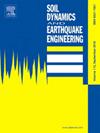Ground-motion generations using Multi-label Conditional Embedding–conditional Denoising Diffusion Probabilistic Model (ML–cDDPM)
IF 4.2
2区 工程技术
Q1 ENGINEERING, GEOLOGICAL
引用次数: 0
Abstract
Current studies on ground motion prediction equations require the categorization of earthquake records by regions with different attenuation patterns. Conversely, machine learning based on entire datasets provides an opportunity to explore the factors that dominate ground motion at a site and their complex interactions. In this study, Multi-label Conditional Embedding is proposed to modify a conditional Denoising Diffusion Probabilistic Model (cDDPM) and achieve ground motion prediction of earthquake scenarios. A database was created for neural network training, consisting of 7154 horizontal ground motion records from 105 earthquakes selected from the Next Generation Attenuation (NGA)-West2 database of the Pacific Earthquake Engineering Research Center (PEER). Each record was labeled using four conditional parameters: VS30, F, MW, and Rrup. To embed multi-label and location information into the neural network, One-hot Encoding and Positional Encoding techniques were integrated. Hence, a Multi-label Conditional Embedding–conditional Denoising Diffusion Probabilistic Model (ML–cDDPM) was constructed for ground motion prediction. The model was used to simulate ground motions of past earthquakes and was compared with recorded motions. The model was also compared with two other neural-network-based prediction models. The comparisons demonstrate the reliability of ML–cDDPM in simulating ground motions for earthquake scenarios and its superiority over the other two models in representing the complexity of ground motion.
求助全文
约1分钟内获得全文
求助全文
来源期刊

Soil Dynamics and Earthquake Engineering
工程技术-地球科学综合
CiteScore
7.50
自引率
15.00%
发文量
446
审稿时长
8 months
期刊介绍:
The journal aims to encourage and enhance the role of mechanics and other disciplines as they relate to earthquake engineering by providing opportunities for the publication of the work of applied mathematicians, engineers and other applied scientists involved in solving problems closely related to the field of earthquake engineering and geotechnical earthquake engineering.
Emphasis is placed on new concepts and techniques, but case histories will also be published if they enhance the presentation and understanding of new technical concepts.
 求助内容:
求助内容: 应助结果提醒方式:
应助结果提醒方式:


